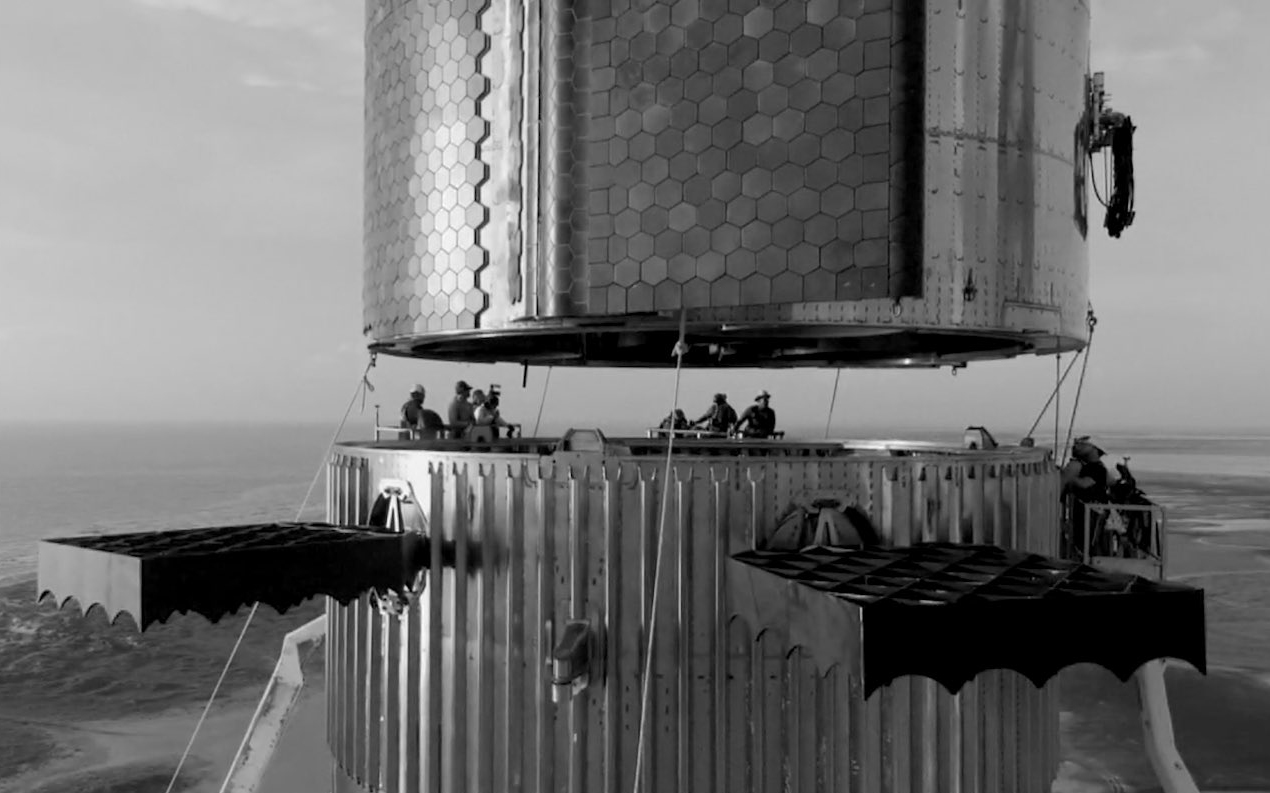The story behind black-and-white photo of SpaceX's Starship

SpaceX's next Starship prototype got the black-and-white treatment in a suave new photo shared by company founder Elon Musk.
The picture appears to show the Starship SN20 ("Serial No. 20") prototype during fit checks on Aug. 4 with the first-stage Super Heavy rocket, when the stacked rocket briefly became the tallest one in the world.
The picture provides a close-up view of the mating procedure between Starship and Super Heavy, with engineers perched underneath. The picture is reminiscent of the famous black-and-white "Lunch Atop a Skyscraper Photograph" taken by Charles Clyde Ebbets on Sept. 20, 1932, during construction of Rockefeller Center in Manhattan.
Related: NASA picks SpaceX's Starship to land Artemis astronauts on the moon
Musk didn't post any comment with the picture Aug. 6, although he had lots to say on his Twitter feed about the fit check. In several tweets, Musk wrote that it is "an honor to work with such a great team," and added that it's a "Dream come true," to see the vehicle stacked.
Super Heavy alone stands 230 feet (70 meters) tall, and the Starship craft adds another 165 feet (50 m) of height. Together, they stand 395 feet (120 m), taller than any other rocket, including NASA's famous Saturn V moon rocket, which was 363 feet (110 m) tall.
But when the duo will blast off for the first-ever Starship orbital flight attempt is unknown. The spacecraft and its rocket must undergo numerous technical examinations before getting clearance to lift off from the launch pad near the village of Boca Chica, Texas. Both the Super Heavy and Starship SN20 are expected to undergo separate static fire tests. SpaceX is also waiting on a Starship launch operations environmental review from the Federal Aviation Administration, which has an unclear completion date.
Sign up for the Live Science daily newsletter now
Get the world’s most fascinating discoveries delivered straight to your inbox.
On Twitter, Musk also wrote that Starship and its Super Heavy booster need at least "4 significant items" before they'd be ready to fly. Those items are final heat shield tiles for Starship, thermal protection for Super Heavy's engines, more ground system propellant storage tanks, and a quick-disconnect arm for Starship, which will likely be attached to the pad's gantry tower.
SpaceX has tested several prototypes in flight, but this will be the first orbital attempt for the Starship program. The orbital flight plan submitted to the FAA suggests the Super Heavy Booster 4, after hefting its first Starship prototype to orbit, will splash down in the Gulf of Mexico roughly 20 miles (32 kilometers) offshore. Starship will boost itself to orbit, circle Earth once and return over the Pacific Ocean, near the Hawaiian island of Kauai, about 90 minutes after launch.
Follow Elizabeth Howell on Twitter @howellspace. Follow us on Twitter @Spacedotcom and on Facebook.

Elizabeth Howell was staff reporter at Space.com between 2022 and 2024 and a regular contributor to Live Science and Space.com between 2012 and 2022. Elizabeth's reporting includes multiple exclusives with the White House, speaking several times with the International Space Station, witnessing five human spaceflight launches on two continents, flying parabolic, working inside a spacesuit, and participating in a simulated Mars mission. Her latest book, "Why Am I Taller?" (ECW Press, 2022) is co-written with astronaut Dave Williams.











